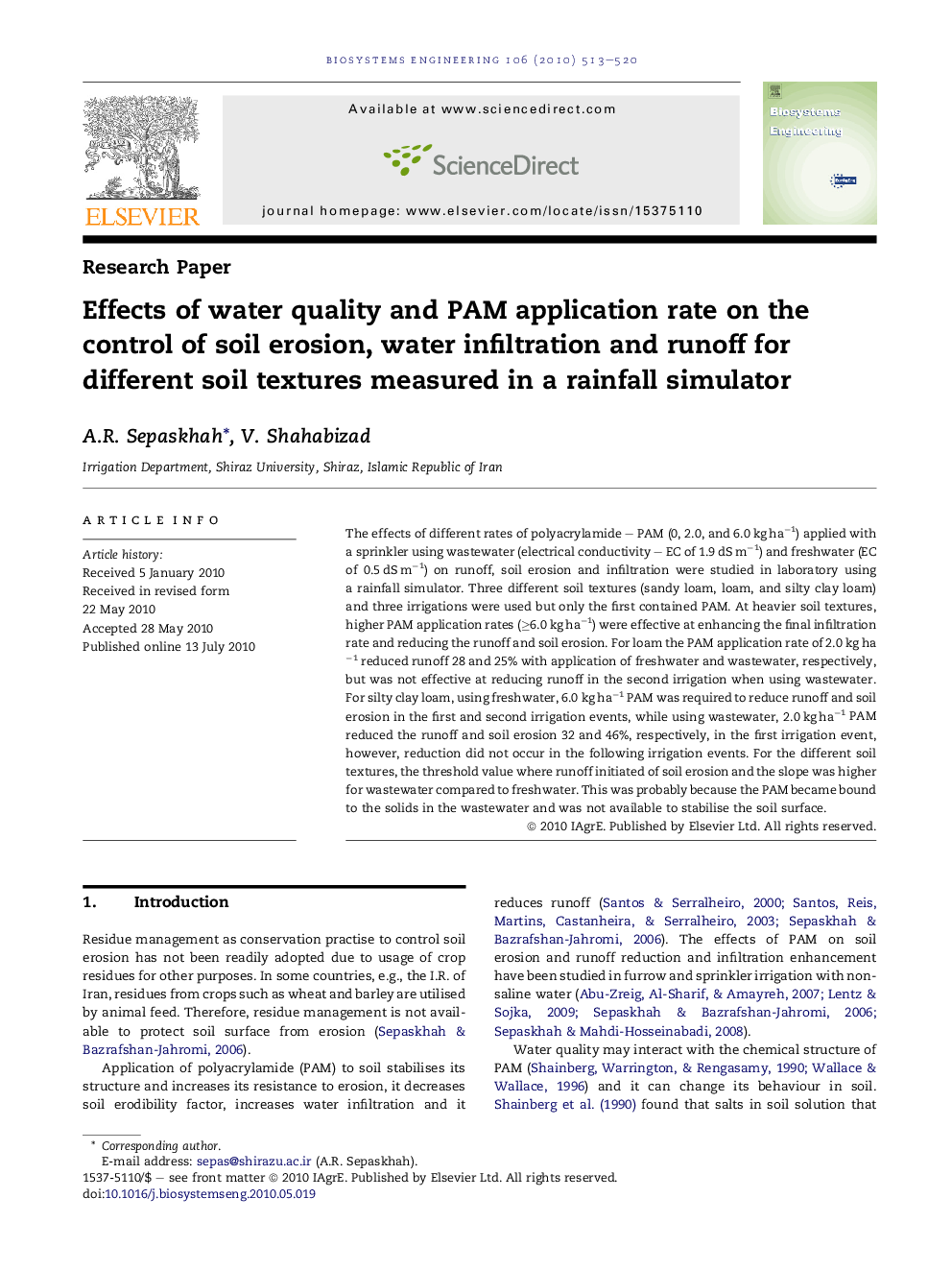| Article ID | Journal | Published Year | Pages | File Type |
|---|---|---|---|---|
| 1711771 | Biosystems Engineering | 2010 | 8 Pages |
The effects of different rates of polyacrylamide – PAM (0, 2.0, and 6.0 kg ha−1) applied with a sprinkler using wastewater (electrical conductivity – EC of 1.9 dS m−1) and freshwater (EC of 0.5 dS m−1) on runoff, soil erosion and infiltration were studied in laboratory using a rainfall simulator. Three different soil textures (sandy loam, loam, and silty clay loam) and three irrigations were used but only the first contained PAM. At heavier soil textures, higher PAM application rates (≥6.0 kg ha−1) were effective at enhancing the final infiltration rate and reducing the runoff and soil erosion. For loam the PAM application rate of 2.0 kg ha−1 reduced runoff 28 and 25% with application of freshwater and wastewater, respectively, but was not effective at reducing runoff in the second irrigation when using wastewater. For silty clay loam, using freshwater, 6.0 kg ha−1 PAM was required to reduce runoff and soil erosion in the first and second irrigation events, while using wastewater, 2.0 kg ha−1 PAM reduced the runoff and soil erosion 32 and 46%, respectively, in the first irrigation event, however, reduction did not occur in the following irrigation events. For the different soil textures, the threshold value where runoff initiated of soil erosion and the slope was higher for wastewater compared to freshwater. This was probably because the PAM became bound to the solids in the wastewater and was not available to stabilise the soil surface.
